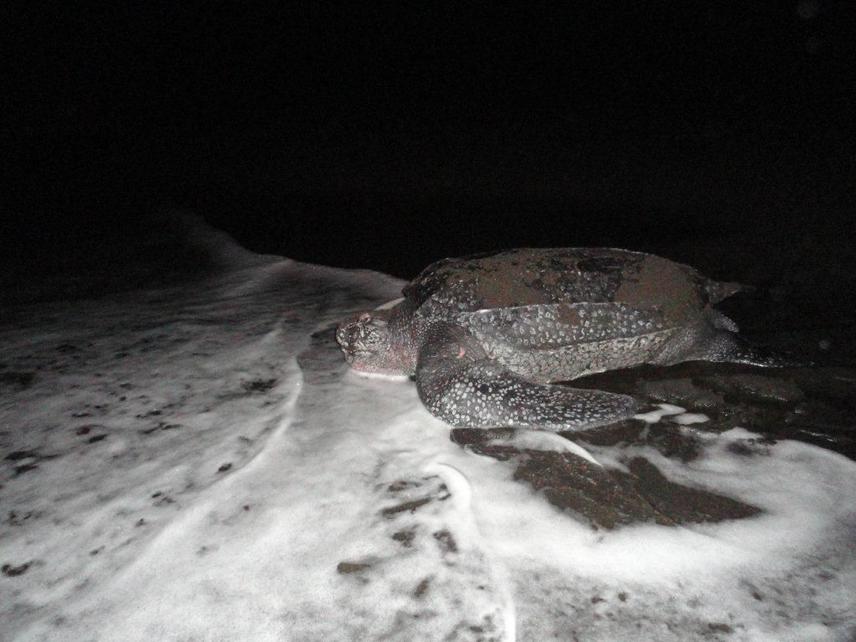James Chantrey Williams
Other projects
17 Dec 2013
Capacity Building in the Solomon Islands to Enhance Leatherback Sea Turtle Conservation
To build upon the achievements of 2015, solidifying efforts to protect the critically endangered western pacific leatherback and expand community education, focusing skills and reaffirming linkages.

This project is co-funded by the Rufford Foundation and NOAA’s National Marine Fisheries Service, and supports regional efforts to reverse the decline of the leatherback in the Western Pacific. Specifically, this project targets adult nesting turtles, their eggs and hatchlings during the summer months (June through September); turtles potentially from different genetic stock to the winter nesters. Through a community-based conservation agreement, brokered through the Waihau Conservation Foundation, rangers and the community are incentivised to carry out the vital work needed to give the leatherback population the best chance of survival. This project is recognised by the national government and could act as a stepping stone towards a more widespread conservation effort at crucial nesting beaches across the Western Pacific.
Key activities:
1) Establish a revised monitoring schedule and maintain strong recording and reporting protocols.
2) Introduce new skills and knowledge regarding nest identification, threat identification and relocation.
3) Determine a further development project for the community and provide assistance in delivering on their wishes, maintaining the high level of buy-in and support from the wider community.
4) Re-election of turtle rangers and continued support for the project coordinators where necessary. An open invitation will be made for more neighboring villagers to participate.
5) Implementation of monitoring improvements, such as use of handheld radio, and a second pit tag reader to simplify data collection logistics.
6) Provide copies of the final report back to the community to reinforce learning.
Methods involved in the monitoring and conservation of leatherbacks:
1) Beach walks by rangers every morning to identify individual turtle nests. The location of each nest will be recorded using a simple handheld GPS.
2) Marking nests and protection using a bamboo grid. This prevents dogs from digging up nests to eat eggs and deters human ‘poachers’ from removing eggs. It also instills a sense of pride and ownership of nests within the community.
3) Assessment of nest location and potential threat of tidal inundation and beach erosion. Nests judged to be in a poor location will be carefully relocated to a previously identified ‘safe’ part of the beach.
4) Recording of nesting events including opportunistic tagging and collection of size and genetic data from adults.
5) A Community Incentive fund which can be accessed by the Waisurione community to pay for materials and services that will benefit the Village as a whole, such as education materials or health services.